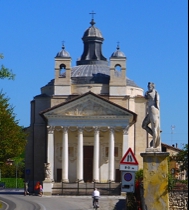© 2014--2023 Cycling Made in Italy Website design by Architectural Webdesign
Browser photo: Richard Bosch Architect
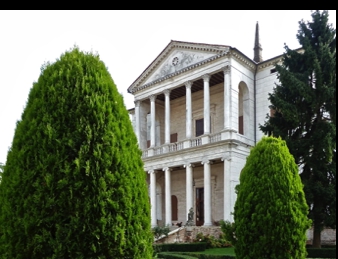
Palladio villas
The Veneto is still sprinkled with dozens of Palladio villas, almost all of them reachable by an informed combination of bike and train. While in the Veneto, use this opportunity to visit several of the most important villas, as presented on this page.
Andrea Palladio is considered the most influential architect of all time: bringing to life the writings of the great Roman architect, Vitruvius; leaving his own extensive legacy of Renaissance/Baroque churches, public buildings, palazzi and villas; setting new standards for the printing and publishing of architectural drawings; and thereby influencing centuries of later architects throughout Europe and the Americas, notably in the US, Thomas Jefferson in his designs of Monticello and the University of Virginia.
Palladio's villas are not the same as castles or chateaux in other countries; rather they represent country homes, and often working farms, of the wealthy merchant and political classes from Venice. Incorporation of the barchesse—the farm support buildings adjacent to most villas—into the more Classical main structure, is what gives Palladio's architecture a wondrous eclectic feeling, which nowadays we might call fusion, as in the example of Villa Barbaro and its adjacent Tempietto, to the right.
Palladio is often compared to Le Corbusier in that each design was remarkably different from the previous or the next. Each design was an opportunity to explore a new idea. There was also a preference by both for white buildings when set in the countryside. [And both their names are pseudonyms? Ha, ha...]
Palladio's most famous Villa Rotonda, just outside of Vicenza, is usually seen from below. This is the more fascinating entry with a barchessa flanking the approach.
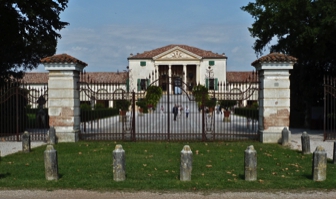
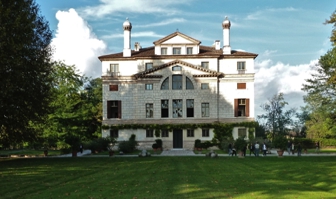
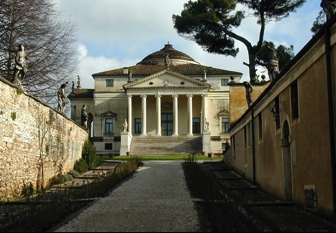
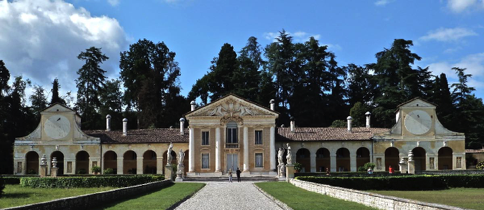
Villa Cornaro, is set within the town of Piombino Dese and therefore technically a palazzo; it is one of few Palladio villas that does not have any barchesse.
Villa Foscari, La Malcontenta, set along the Brenta Canal in the town of the same name. The garden side is admired for its inventive etched design and use of Venetian chimneys.
Villa Emo, near Fanzolo, has an erudite quality, achieved by raising the main house well above the adjacent barchesse and creating a vast ramp into the house.
Villa Barbaro, near Maser, evokes a light-hearted garden architecture feeling, accentuated by the color of the main house. The small Tempietto, just to the east, has a similar fantasy feel that appears also in Il Redentore along the Giudecca Canal in Venice.
Photo: Paolo Bonavoglia - In Praise of the Bicycle
